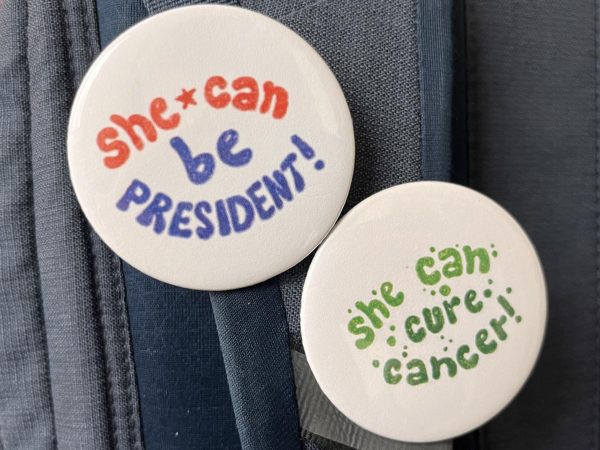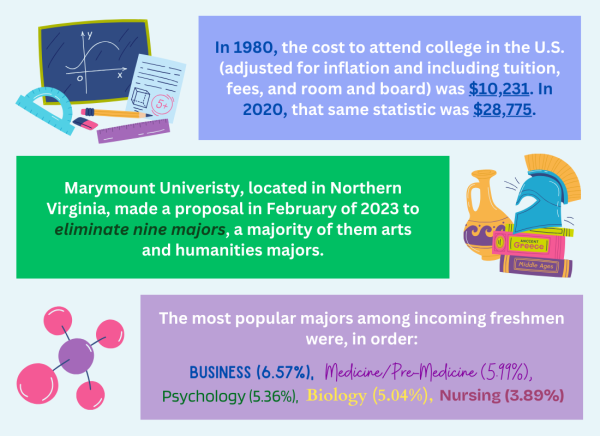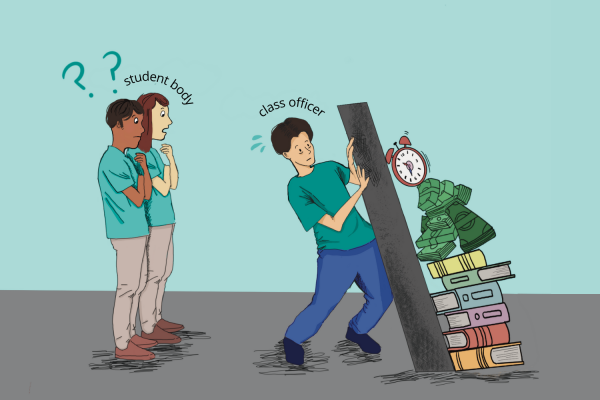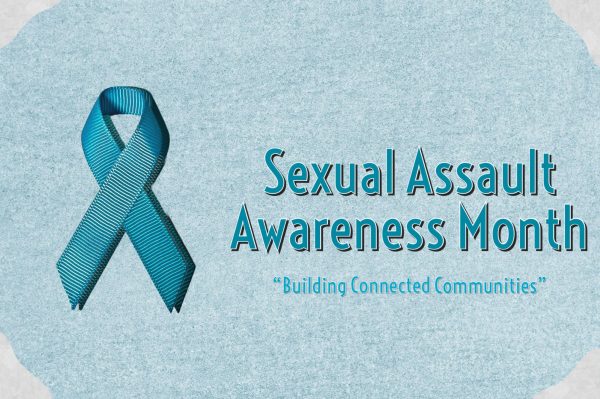A distorted media mirror: We need better autism role models in television, film
As an autistic person myself, it’s about time we get strong characters in the media that represent the whole person, not someone with a “disability.”
April 23, 2021
What do we love about Sherlock Holmes? He is a quirky, brilliant, violin-playing, perceptive detective. Yet for all of his skills, he doesn’t give members of the autism spectrum much of a well-rounded, healthy character.
There are a number of stereotypes around autism that are so far from the reality that damage autism awareness. It also doesn’t help that the representation of autism within the media has been mixed at best. It’s heartbreaking, because people with autism, like me, can be negatively affected by people’s lack of understanding of our conditions.
As an autistic person myself, it’s about time we get strong characters in the media that represent the whole person, not someone with a “disability.”
Autism in media
Representation in the media has slowly started to grow, and with it comes the inclusion of more autistic characters like the recent Netflix show, Atypical. More characters are also in video games, too, like Symmetra in Overwatch.
When young women began to see themselves represented as more than Barbie dolls, they began to break out of the mold of what was considered normal for girls, which is typically what happens for many different representation presentations.
This is important for sexuality, race, and mental condition, and gives those groups a chance to relate to someone in a way they haven’t before. These representations give us the chance to understand a world view beyond our own and see ourselves in them.
The representation of autism is mixed, and often falls into the stereotypically limiting presentation. Characters shouldn’t just have these traits just slapped onto them. Autistic characteristics should be integrated into character actions, thoughts, feelings and purpose. Unfortunately, that’s a point that many writers seem to miss.
There are a number of characters with autism in the media though they are limited, and there are many others who are speculated to be on the spectrum. The characters that autistic people relate to the most are in the speculative category, because the confirmed characters list is so limited.
However, rarely is are these people ever celebrated as much as gay, bi, or trans characters, and many of these characters are live action. And this is sad, because autistic people actually empathize more with animation , and it’s always a wonderful thing for them to see someone who they can relate to, because that’s hard for us.
I will give the limelight to two of the wonderful ladies who have affected television, and me.
Julia’s sunny personality teaches children the value of autistic individuals.
Julia is a 4-year-old girl with autism on Sesame Street, created to explain autism to younger viewers. While she’s not the first character introduced as autistic in a kid’s show, she’s the only one who makes a constant positive impact. Due to popular demand, she became a mainstay character.
“The orange-haired, twinkly-eyed Julia sometimes does things differently, but that’s OK. Elmo and Abby help the other kids on Sesame Street understand that even if Julia doesn’t look you in the eye, it doesn’t mean that she doesn’t want to be your friend. Simply by making Julia ‘part of the gang,’ she is already having a big impact,” PBS Sesame Workshop published.
Julia is one of the few children’s cartoon characters who is autistic, and who are a mainstay of their series, and this is a great thing.
Julia has a high noise sensitivity, and often uses earmuffs to combat over stimulation. She gets highly disturbed by sounds such as sirens or loud music, and often covers her ears to block them out and needs to take a moment in order to recollect herself when she gets over-stimulated.
She also has a hard time looking others in the eye, but that doesn’t mean that she’s not listening or that she doesn’t want to be friends. Her way of communicating her emotions to others is often through stimming (self-stimulating behaviors) such as hand flapping, rocking, or repeating noise, which can make her hard to understand.
She’s touched so many people through her presentation and showed others what an autistic kid might be like.
Children need to understand that some people don’t work the same as others, and that some people have different needs than others, and Julia is the perfect device to carry such a method to little kids without undermining the idea of autism. Exposure to such characters at a young age can increase one’s understanding of them, thus they will likely be more empathetic towards an autistic person in the future.
Unlike the social experiences I have often encountered, she’s well-liked by the other characters and is never looked down upon or shunned. I can basically see my younger self in her. The shy girl who didn’t like noise, but was also rather intelligent, and who wasn’t afraid to join in on activities, even if it might be hard for her.
This is the kind of attitude we should strive to take towards autistic children, and Julia is certainly a step in the right direction to get there. I only wish we had gotten someone like her a bit sooner. She was created in 2015, the first autistic character for younger kids that is a mainstay in her show. It will take a long time to grow young people into sensitive adults.
The Princess of Power gives autistic people a powerful ally
If Julia is my childhood, then Entrapta is my soul. She comes from She-Ra, The Princesses of Power, a show that is known for its diversity and inclusivity.
Entrapta is the hyperactive, cheerful, bubbly, intelligent, and cute magicless princess from Dryl, and I relate to her so much. She has a lot of characteristics of autism such as lack of social skills, obsessive tendencies and special interests, picky eating, and repetitive behaviors. She also has a lot of quirks like fizzy drinks, tiny foods, and cute things that are honestly way too close to my life.
She doesn’t have anyone she can call her friends, and the ones who are around her seem more weirded out by her than friendly. She would rather spend her days alone doing her own thing, which is so much like me, and she doesn’t fully comprehend certain concepts like enemies and war.
She knows that she’s different from the others. She sees failure as a chance to learn. And she sees herself as a failure, but views the term in a positive light, which is so refreshing.
One of the big mistakes with autism in both media and in real life is that diagnosis is perceived as a catastrophe, which is far from the truth. Autism isn’t an-end all disease that must be cured; it’s just a condition that means some people work a little differently, and that’s okay. Most people with autism don’t care that they have the condition. What they care about is the way people treat them.
Entrapta is also rather lonely, and extremely heartbroken, especially when she thinks that no one cares and everyone has left her, which hits pretty hard. I know first-hand the emotional devastation that comes from thinking that no one wants you because you are different. It hurts in ways I can’t even describe, and I could understand why she ran towards the first people who seemed to want her, despite all the warning signs. We have an innate desire to be wanted, and when we feel we aren’t getting that desire we become desperate, we do rash things.
We ignore the warning signs because we want to be loved and truly can’t understand why that offer would come with strings.
She is also fairly oblivious and has rather one-track mind. She doesn’t exactly recognize danger, or even threats on her life. She just does what she wants, and doesn’t really think about how it might affect others, because she doesn’t understand. She can seem apathetic at times, but when she actually does understand, she will even nurture the guy who was once the big bad of the series, and lead him towards a redemption arc, simply by just showing him kindness..
The main part where I fell in love with Entrapta where she realized that she messed up, and when trying to fix her mistakes, she told the others “I’m not good at people, but I am good at tech. I thought maybe, if I can use tech to help you, you’d like me, but I messed that up too,” and “I’m sorry I’m bad at listening! I’m sorry I mess everything up! But you need this signal, and I’m going to get it for you!”
Entrapta is affected by her mistakes she made out of her obliviousness, but upon realizing those mistakes, she feels genuine guilt, and tries to make it up to others through her own special way. She does the only thing she knows how to do and hopes that people will like her because of it, but it doesn’t always work like that. She cares: it’s just that she finds it hard to show it.
Entrapta is an enjoyable, funny, and relatable character who fully embodies, for me, what it’s like to be autistic, and the struggle of trying to connect with others while still being true to yourself. It was wonderful to see her in action, and I can only hope that more writers will take a page from Entrapta’s book.
Stop focusing on brainy, awkward geniuses: We are more than that
Many depictions of autism come in a singular brand: the super genius who is socially awkward, but it’s okay because they know everything about everything.
And these bad representations like Sheldon Cooper (The Big Bang Theory), Shaun Murphy (The Good Doctor), and Sherlock Holmes, are the ones people most remember when thinking about autistic characters. Some of these characters are actually well-known and popular, but therein lies the problem. These are terrible representations, no matter how you look at it, and they paint a false image for how autistic people act and can set unrealistic expectations.
Generally, the genius characters make the autism and genius part their only trait. There is nothing else to endear you to that character, and the all-knowing genius part couldn’t be farther from the truth. Shaun Murphy falls into this trap as his photographic memory abilities heavily romanticize the idea and drag the symptoms to unrealistic degrees. People like Shaun and Sherlock are the neurominority and can set a very harmful precedent for those who don’t really know what autism is.
Characters like Sheldon often play up behaviors like stimming or quirkiness tendencies for laughs, such as his “knocking joke.” However, what they often fail to grasp is the cases of these sorts of behaviors that can be very serious, such as the fact that some kids actually bang their heads on walls. These episodes also tend to exclude the struggles and habits an autistic person may have, and if they do show that, then they do so in a way that can seem unrealistic or heavily overdramatized.
It’s important to remember that good characters don’t always equal good representation.
It helps to often have people on the team working for shows that actually have these conditions, to give an insider’s perspective. Because of this, many people are enraged when people who have no idea what being autistic is like, star in something meant to portray an autistic person. It helps not to just have representation within your show, but also your staff. Talk to people, listen to them, and learn what their experience is like.
Where are the animation autism characters?
Autistic people often gravitate towards animation as we can better understand the characters with their more vivid and expressive facial expressions.
So why is it that there are so few animated autistic characters? To be honest, it’s hard to say. Maybe it’s an oversight? Maybe it’s because animation would seem too childish for such a character?
Entrapta’s example illustrates that animation can work just as well as live action with the right writing talent. It can better detail the emotional range of an autistic person and can show that there is not one defining mold of what an autistic person looks like. A large portion of the headcanon list of autistic characters are actually in animation such as Pearl and Peridot (Steven Universe), Marcy Wu (Amphibia), Spongebob, and Dendy (Ok Ko).
Not only that, animation could take away the “actor representation” issue, since there doesn’t need to be an actor who represents the movements, behaviors, and habits of an Autistic person. Rather, the animation does that for them.
Animation is also the media children soak in for much of childhood and early adolescence. Julia is a start, but most children stop watching Sesame Street before they begin elementary school.
Autism isn’t a problem or an unnatural gift, it’s more like a disorder that can affect us in some ways but can help us grow in others, and we deserve to have characters who we can see ourselves in and who can inspire us to rise above many of the challenges we face daily.
This story was originally published on The Lance on April 21, 2021.































![IN THE SPOTLIGHT: Junior Zalie Mann performs “I Love to Cry at Weddings,” an ensemble piece from the fall musical Sweet Charity, to prospective students during the Fine Arts Showcase on Wednesday, Nov. 8. The showcase is a compilation of performances and demonstrations from each fine arts strand offered at McCallum. This show is put on so that prospective students can see if they are interested in joining an academy or major.
Sweet Charity originally ran the weekends of Sept. 28 and Oct. 8, but made a comeback for the Fine Arts Showcase.
“[Being at the front in the spotlight] is my favorite part of the whole dance, so I was super happy to be on stage performing and smiling at the audience,” Mann said.
Mann performed in both the musical theatre performance and dance excerpt “Ethereal,” a contemporary piece choreographed by the new dance director Terrance Carson, in the showcase. With also being a dance ambassador, Mann got to talk about what MAC dance is, her experience and answer any questions the aspiring arts majors and their parents may have.
Caption by Maya Tackett.](https://bestofsno.com/wp-content/uploads/2024/02/53321803427_47cd17fe70_o-1-1200x800.jpg)
![SPREADING THE JOY: Sophomore Chim Becker poses with sophomores Cozbi Sims and Lou Davidson while manning a table at the Hispanic Heritage treat day during lunch of Sept 28. Becker is a part of the students of color alliance, who put together the activity to raise money for their club.
“It [the stand] was really fun because McCallum has a lot of latino kids,” Becker said. “And I think it was nice that I could share the stuff that I usually just have at home with people who have never tried it before.”
Becker recognizes the importance of celebrating Hispanic heritage at Mac.
“I think its important to celebrate,” Becker said. “Because our culture is awesome and super cool, and everybody should be able to learn about other cultures of the world.”
Caption by JoJo Barnard.](https://bestofsno.com/wp-content/uploads/2024/01/53221601352_4127a81c41_o-1200x675.jpg)













